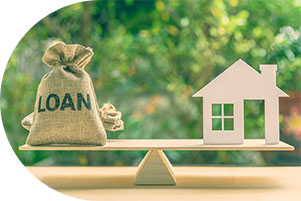Debt: The Good, the Bad and the…Ways to Better Manage It

The word “debt” brings on feelings of tension or anxiety for many of us. We likely respond that way because of the connotations associated with having any debt. Debt by nature is frowned upon and considered “bad.”
But is there such a thing as “good” debt? According to “Saving Grace, a Guide for Financial Well-Being,” there are two characteristics of “okay” or “good” debt:
- Debt is incurred on something that has the strong potential to increase in value, such as a home (not a depreciating or consumptive item, such as clothing or electronics).
- It can be repaid under today’s circumstances— not hoped-for circumstance in the future.
Having a mortgage for purchase of a primary residence, as mentioned above, is the most common personal form of “good” debt.
Even with “good” debt, it’s important to exercise caution. For example, before taking on debt be sure to understand details around the cost and structure of the debt. When buying a home or car, confirm the interest rate that will apply. Is the interest rate fixed or variable? Is there an additional layer of cost through an additional Annual Percentage Rate (APR) that goes alongside that stated interest rate? Are there any excessive penalties if a payment or two are missed? Answering these questions before taking on debt can save you money down the road and prevent good debt from turning into bad debt.
The most frequent form of “bad” debt is credit card debt. Overuse of credit cards can quickly create a drag on our monthly cash flow. Because credit cards have higher interest rates, it can be a challenge to keep up with the monthly minimum payments, making it harder to pay off this form of debt. Unfortunately, this often leads consumers to make sacrifices as cash becomes less and less available for other purposes—such as reducing or stopping contributions into a retirement plan for future financial security. This compounds negative financial impacts for consumers.
Struggles around debt are even more prevalent today, particularly as inflation looms and interest rates rise. Student loan debt is front and center as we try to find the right balance between the excessive cost of higher education (and other items) against fairness and equity across our society.
So, what do we do about debt? How can we learn more about debt and how to better manage our finances to avoid debt, particularly “bad” debt?
Let’s start with the holiday season, which is a prime time to add consumer debt. Be mindful of expenses incurred during this time of year. Large family gatherings, gifts, parties and seasonal entertainment are all wonderful things; but maybe not all of them can be experienced each holiday season. It often comes down to a balance. Talk to family members and consider how you might celebrate the joy of the season while not breaking the bank. You might be surprised that others are equally willing to take a break from gift giving for a season or two.
Learn more about your personal financial habits and how they might drive you to either take on debt or avoid it. Check out “Saving Grace, a Guide for Financial Well-Being.” Through this financial planning curriculum, you can learn how to track expenses and evaluate your income, discuss giving and saving, and address debt. You can also learn how to create a personal spending plan that will guide every aspect of your financial life.
And finally, eligible participants can speak with EY Financial Planning Services (or your own financial advisor) to help you understand the debt you have – both good and bad – as well as strategics to reduce debt and get back on a strong financial path.

